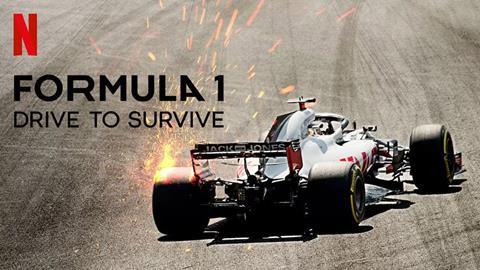Daniel Funston, senior account director in the sport & fitness team at The PHA Group, looks at how documentaries are changing rights holder-fan relationships

As someone who grew up watching slightly grainy VHS footage of iconic docuseries Living With The Lions – providing unfettered access to the blood, sweat, tears and testosterone fuelling the British & Irish Lions tours of yesteryear – I somewhat challenge the notion that the fly-on-the-wall sports documentary is a new phenomenon.
What is undeniable, however, is the cultural and commercial impact the proliferation of big money, blockbuster quality modern day sports docuseries are having for rights holders and brands that fully embrace them. And the way this unfiltered, human storytelling is reshaping tried and tested broadcast habits.
The latest iteration of BTS sports docuseries can be traced back to Drive To Survive – the new Year Zero when it comes to the category. Drive To Survive became a cultural phenomenon, riding a wave of lockdown-induced boredom amongst sports fans with no sport to watch. Its overnight success ushered in a wave of new F1 fans and, crucially, made the sport a conversation point not only for F1 and casual sports fans, but for people with no skin in the game whatsoever, who were suddenly drawn to a compelling set of backstories and driver rivalries.
A proliferation of docuseries followed, with both mainstream and less-heralded sports falling over themselves to pitch the, ‘Drive To Survive of *insert sport*,’ to streaming giants such as Netflix and Prime Video.
The latest of these, Netflix’s The Greatest Showmen, which pulls back the curtain on Barry and Eddie Hearn and their Matchroom behemoth, has become another hit and the genre’s continued success and adoption by sports as widespread as football, rugby, tennis, athletics, gymnastics, cheerleading, climbing and diving represents a huge shift in the kind of content sport fans want to see – and the kind that rights holders perceive as crucial in attracting new audiences.
In a sport industry of 24-hour rolling news, instant app alerts, wall-to-wall media coverage and availability of swathes amount of data on players, clubs and leagues, consumer habits have shifted dramatically to an appetite for personality-driven, human interest heavy, relatable content.
It’s this content that gives diehard fans another layer of knowledge to contribute to growing levels of discourse, while for novices and more casual audiences, behind-the-scenes content allows them to engage with sport and form an opinion on athletes without requiring an encyclopaedic knowledge of their discipline.
Not everyone can tell you the average pit stop time for McLaren F1 this year, but now you needn’t know that to have a voice on the rivalry between teammates Lando Norris and Oscar Piastri.
As well as swelling audiences and creating an entirely new channel through which sport fans – hardcore and casual alike – can engage with the stories behind their favourite events, clubs and athletes, the success of BTS docuseries has shifted traditional broadcast dynamics and, in many instances, forced them to up their game.
Fans tuning into Sky Sports, TNT Sports and Prime Video coverage are being brought closer than ever to the action and reaction. TNT Sports in particular have pushed boundaries with their rugby coverage, for example, as Prem Rugby especially shifts its focus on dialling up the gladiatorial element of the sport and trying to create more household names and marketable stars.
The broadcaster has been interviewing coaching staff mid-match for several years now, but over the last season have upped the ante by speaking to players on the pitch during their warm-up and even micing up coaching staff to give viewers an insight into teams’ final preparations and pre-match drills.
Again, not every sports fan wants to know the intricacies of the rugby union box kick or the pros and cons of a 5-3 or 6-2 bench split, but bringing them closer to ferocious contests to the point where they can practically smell the grass and feel the heat coming off the players pre-game is opening up new insights into the human element of the sport.
The shift in dynamic has even reached legacy broadcasters such as the BBC and ITV, who are looking for ways to differentiate themselves and retain/win back audiences who are increasingly seeking content on digital platforms. Their social media teams are now as crucial as their linear punditry line-ups, with supporting content focused very much on teasing out the backstories of the stars or producing bitesize, shareable content that showcases their personalities.
It’s a shift that is unlikely to arrest itself any time soon and rights holders who recognise this will be relying not only on a new wave broadcasters and streaming platforms to put their stars in the spotlight or unearth hidden gems. They’ll be honing their comms and marketing strategies to put the person behind the athlete first, loosen the reins during media appearances and seek out channels that place a premium on personality, human interest stories and uncovering the trials & tribulations we can all relate to.

Daniel Funston is senior account director in the sport & fitness team at The PHA Group





No comments yet